
views
Cleaning Up Cat Urine
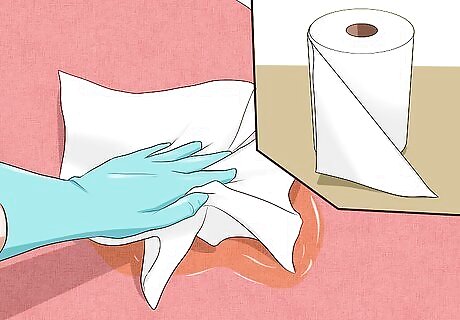
Blot the urine on your carpet with paper towels. Try to remove as much of the urine as possible. This will ultimately make your job easier. Use clean paper towels and apply pressure. Repeat with new paper towels until you are unable to soak up any more urine. Skip this step if the urine has already dried. You can also use old throw-away towels instead of paper ones. The thickness of regular towels allows for better absorption, soaking up more cat urine. If available, use a white towel. Once there's no longer a yellow-tint to the liquid being absorbed, you'll know all the urine has been absorbed.
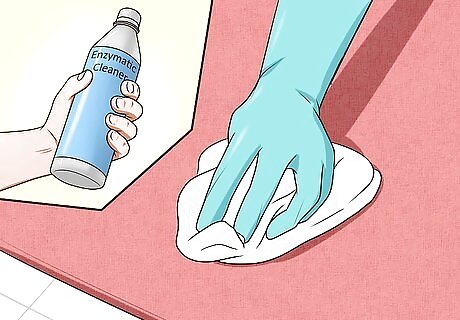
Use an enzymatic cleaner. Enzymatic cleaners, like Nature's Miracle, contain special biological enzymes that break down the proteins in urine, reducing or even completely eliminating the smell. Note that some enzymatic cleaners may not work if other chemicals were used beforehand to try to treat the stain. It is generally a good idea to try the enzymatic cleaner first and saturate the area well. Follow the manufacturer’s directions closely and allow it to dry for several days. You may not have to do anything else.

Mix up a vinegar solution. If an enzyme cleaner didn't completely remove the smell, use a vinegar solution. Combine equal parts of white vinegar and water in a bowl or spray bottle. Saturate or spray the soiled area. Saturate a little bit beyond the soiled area so you can be sure to remove all urine. If you have a black light or UV light at your disposal, you can see the urine glow in the dark and find the exact location of the urine spot.
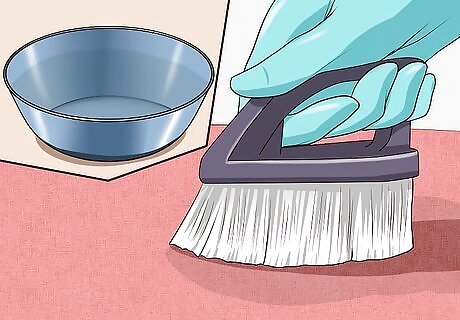
Scrub the vinegar solution into the soiled area. Use a bristle brush and thoroughly rub the vinegar/water mixture until the area is completely soaked. The vinegar will neutralize the ammonia smell in your cat's urine.
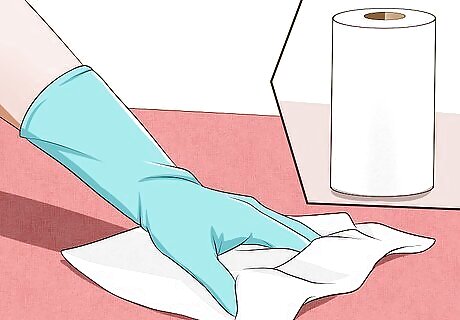
Dry the area thoroughly. Again, use paper towels or a clean rag to blot up as much vinegar solution as possible. Let the area air dry completely after you've blotted it.

Disinfect hard surfaces. Wash the soiled area with a household cleaner that does not contain ammonia. Ammonia smells like urine to dogs and cats. Wipe the area clean with water. In a spray bottle, mix 10 parts water to 1 part bleach. Put on rubber gloves and spray the soiled area. Let the bleach sit for 30 seconds, then clean the soiled area with a damp cloth. Be careful with the bleach as it may damage and change the color of some materials.
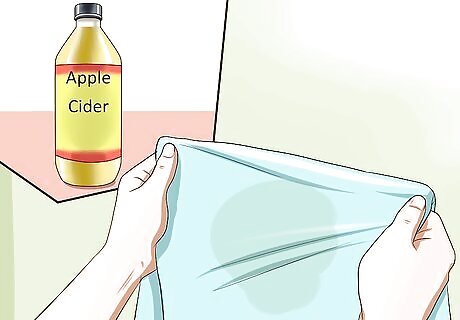
Check clothing for urine. If any clothing has urine, add 1 cup (60 ml) of apple cider vinegar to the laundry detergent in your regular wash. If you still smell urine, add some enzymatic cleaner to your wash. Dry cleaning may be necessary. If you can't get the smell or stain out of an item, you may just have to throw it out.
Deodorizing the Area
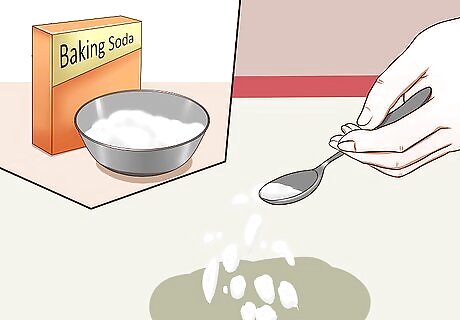
Sprinkle baking soda over the area. Baking soda, also known as sodium bicarbonate, is a natural cleaner as well as an odor-absorber and deodorant.
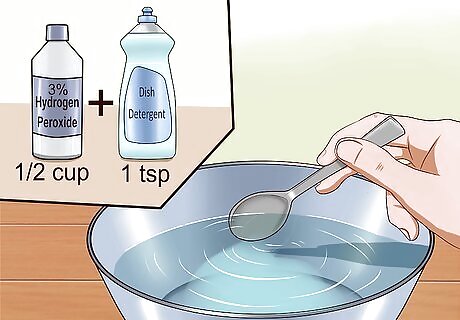
Mix a small amount of hydrogen peroxide and mild dish detergent together. Mix 1/2 cup of 3% hydrogen peroxide with one teaspoon (5 ml) of dish detergent and spread it over the baking soda. You may want to spot test this cleaning solution on an inconspicuous area at first to confirm that there is no discoloration.
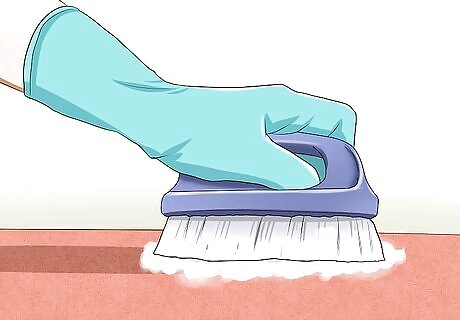
Use a scrub brush to rub the solution into the baking soda. Wear rubber gloves if possible, and wait for the telltale foaming action of the baking soda and hydrogen peroxide to kick in.
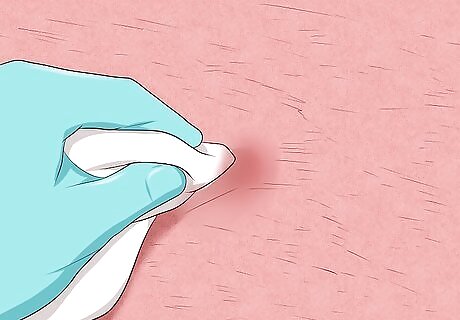
Blot the area and allow the mixture to dry.

Vacuum the soiled area. Vacuuming the soiled area removes both the urine particles and the deodorizer you applied. Extracting wet vacs work the best for this since they saturate the carpet and then vacuum the water back into the vacuum's tank. In a pinch, you can use your regular vacuum; it just won't be as effective as the wet vac. For best results with a wet vac, use cool water in the vacuum tank and always follow the manufacturer's instructions. Avoid using steam cleaners, since the high heat will actually set the stain.
Reducing the Chances of Accidents
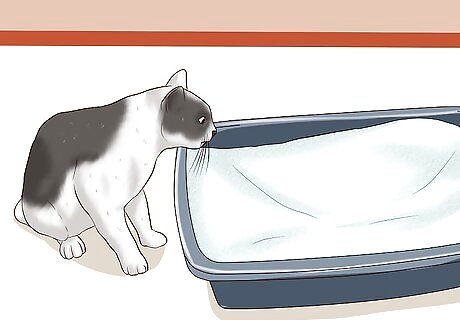
Re-train your cat. Never yell or punish your cat for urinating in the wrong area. Instead, quickly move her to the litter box. Consistently take her to the litter box and give positive feedback when she uses it. This will reinforce a positive association with urinating and her litter box.
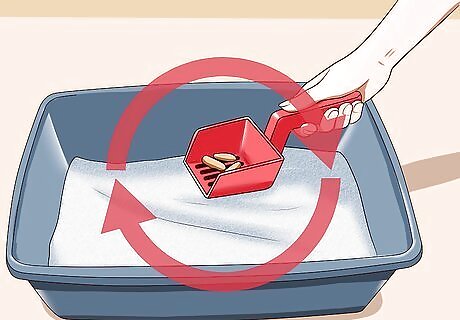
Replace the cat's litter box more often. Cats like clean litter boxes, just as humans like clean bathrooms. If you're neglecting your cat's needs when it comes to offering a clean litter box, he may find it harder to resist urinating on your sofa or carpet. Keep your cat's litter box in a quiet location that is not near its feeding area. This will increase the chance that the box will be used properly.
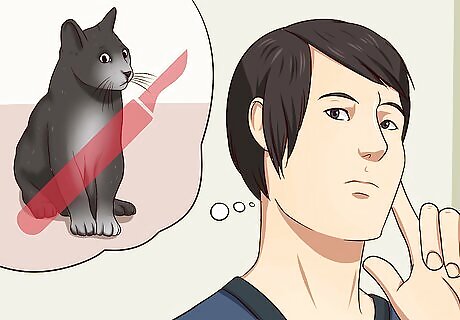
Consider getting your cat neutered or spayed. Cats that are spayed will not purposely urinate in order to mark their territory, solving the problem for you in the first place. Plus, you won't end up with a litter of kittens to potty train!
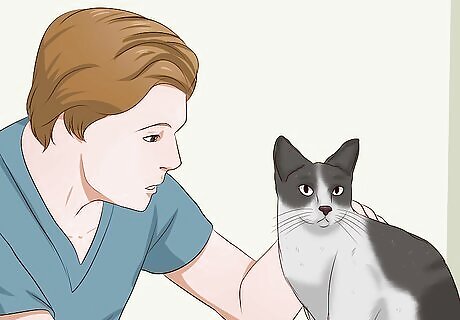
Have your cat checked by the veterinarian. While accidents do happen, particularly with young or even elderly animals, there may be a medical issue at the heart of the problem if you notice your pet urinating inappropriately. Contact your veterinarian to discuss possible medical reasons that your cat is urinating outside of the litter box. Ignoring a medical issue, such as a urinary tract infection, kidney disease or diabetes, could be life-threatening for your pet.




















Comments
0 comment